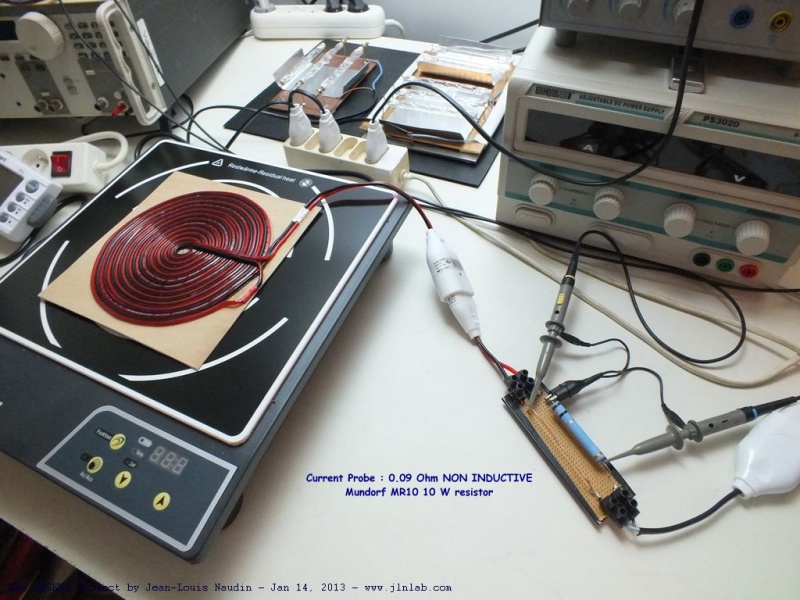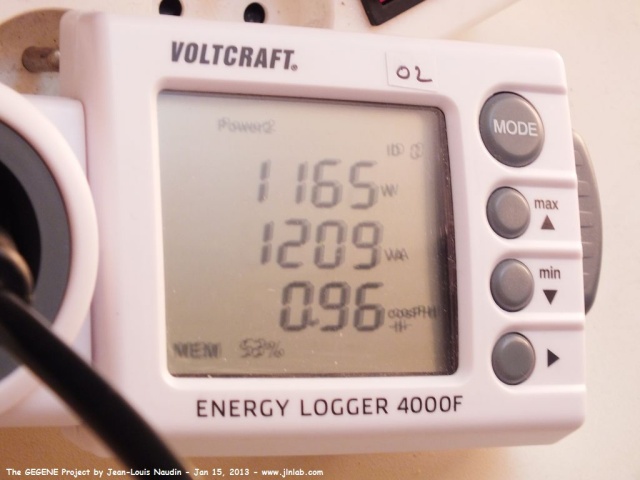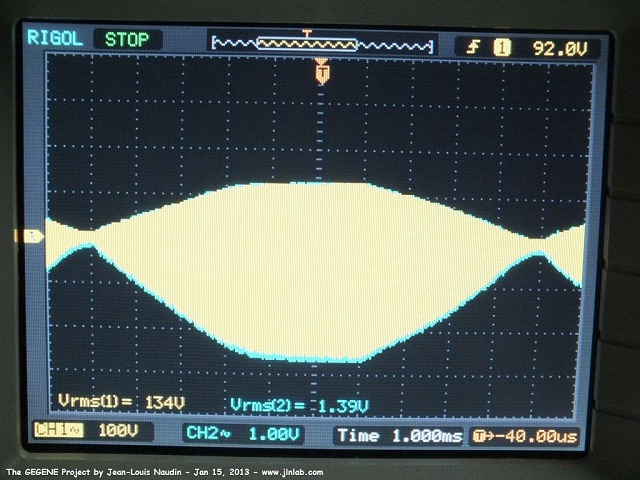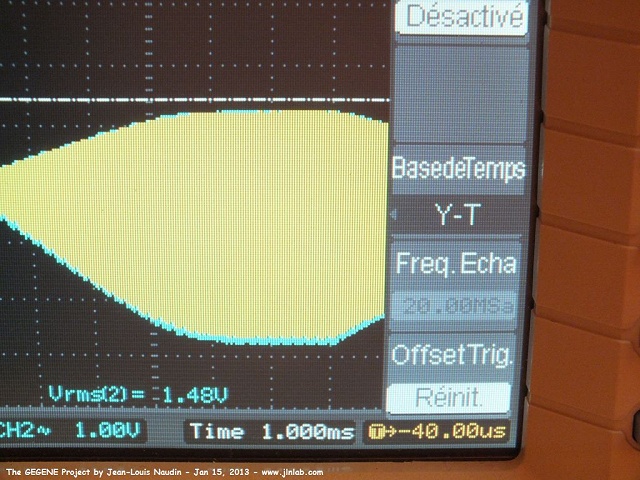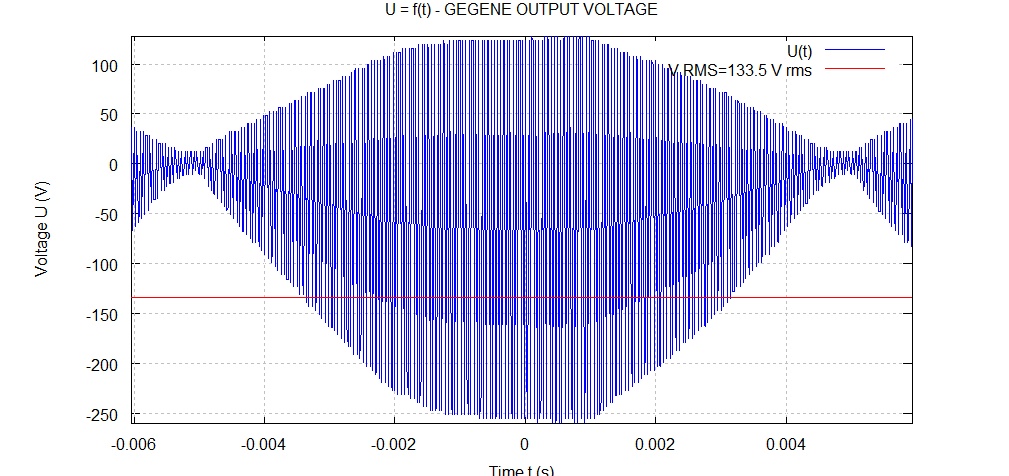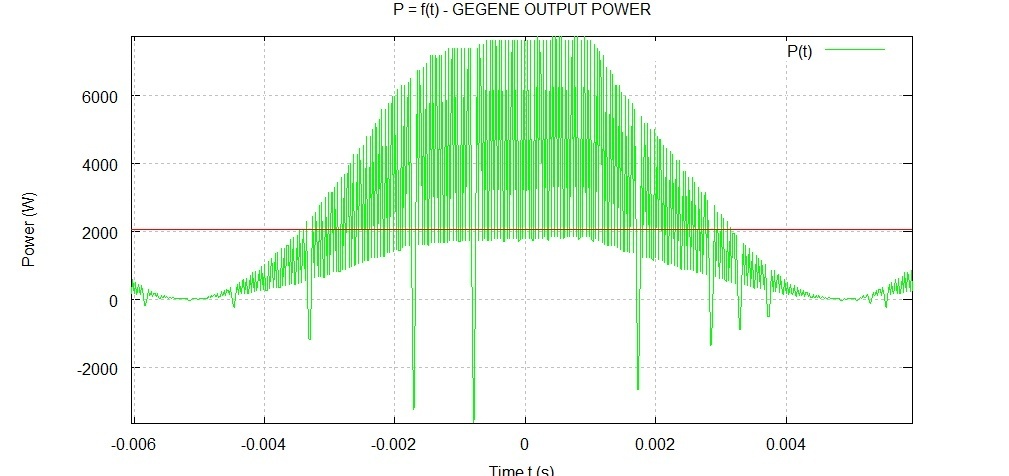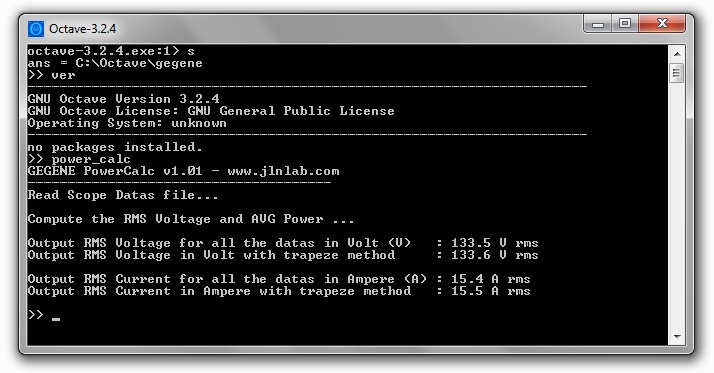% GEGENE Project - RMS Voltage,
Current and Power calculator
% by Jean-Louis Naudin - January 15, 2013
% www.jlnlab.com
%
% This program runs on OCTAVE Version 3.2.4 or MATHLAB
r7.0 or more
% GNU General Public Licence - this is a freeware
%
%
v1.01 : add the trapeze method calculation
%
clear all; close all; clc
r=0.09; % Current probe resistance value in Ohm
fprintf('GEGENE PowerCalc v1.01 - www.jlnlab.com\n');
fprintf('--------------------------------------\nRead
Scope Datas file...\n\n');
datas = dlmread('NewFile0.csv', ',',2,0); % read the datas
scope file
%
Below a sample of the CSV datas from the Rigol digital
oscilloscope
% X,CH1,CH2,
% Second,Volt,Volt,
% -3.72e-03,8.40e+01,7.60e-01,
% -3.70e-03,-3.20e+01,-3.60e-01,
% -3.68e-03,-2.80e+01,-2.80e-01,
l=length(datas); % numbers of sample
t=datas(1:l,1); % t: time base
u1=datas(1:l,2); % ch1: voltage output
u2=datas(1:l,3); % ch2: voltage accros the current probe
%
% compute the RMS Voltage
%
fprintf('Compute the RMS Voltage and AVG Power ...\n\n');
%VTG_rms=norm(u1)/sqrt(length(u1));
VTG_rms = sqrt(sum(u1.*conj(u1))/size(u1,1));
veff=sqrt(trapz(t,u1.*u1)/(t(l)-t(1)));
vrms = zeros(l,1);
vrms = vrms + VTG_rms;
figure(1); clf;
plot(t,u1,'-b',t,vrms,'-r',t,-vrms,'-r');
xlabel('Time t (s)');
ylabel('Voltage U (V)');
title('U = f(t) - GEGENE OUTPUT VOLTAGE');
axis([t(1) t(l) min(u1) max(u1)]);
disp(['Output RMS Voltage for all the datas in Volt (V) :
',sprintf('%0.1f',VTG_rms),' V rms']);
disp(['Output RMS Voltage in Volt with trapeze method :
',sprintf('%0.1f',veff),' V rms']);
grid on
legend('U(t)',['V RMS=',sprintf('%0.1f',VTG_rms),' V
rms']);
%
% compute the RMS Current
%
ip2=u2/r;
%CUR_rms=norm(u2/r)/sqrt(length(u2));
CUR_rms = sqrt(sum(u2/r.*conj(u2/r))/size(u2/r,1));
ceff=sqrt(trapz(t,ip2.*ip2)/(t(l)-t(1)));
crms = zeros(l,1);
crms = crms + CUR_rms;
figure(2); clf;
plot(t,ip2,'-r',t,crms,'-b',t,-crms,'-b');
xlabel('Time t (s)');
ylabel('Current I (A)');
title('I = f(t) - GEGENE OUTPUT CURRENT');
axis([t(1) t(l) min(ip2) max(ip2)]);
disp(['Output RMS Current for all the datas in Ampere (A)
: ',sprintf('%0.1f',CUR_rms),' A rms']);
disp(['Output RMS Current in Ampere with trapeze method :
',sprintf('%0.1f',ceff),' A rms']);
grid on
legend('I(t)',['I rms=',sprintf('%0.1f',CUR_rms),' A']);
%
% compute the Average Power
%
pp=u1.*u2/r;
Pavg = VTG_rms * CUR_rms;
pmoy=trapz(t,pp)/(t(l)-t(1));
pwravg = zeros(l,1);
pwravg = pwravg + Pavg;
figure(3); clf;
plot(t,pp,'-g',t,pwravg,'-r');
xlabel('Time t (s)');
ylabel('Power (W)');
title('P = f(t) - GEGENE OUTPUT POWER');
axis([t(1) t(l) min(pp) max(pp)]);
disp(['---> OUTPUT AVG Power (VTG_rms * CUR_rms):
',sprintf('%0.1f',Pavg),' Watt ']);
disp(['---> OUTPUT AVG Power (Trapeze method) :
',sprintf('%0.1f',pmoy),' Watts']);
grid on
legend('U(t)',['AVG PWR =',sprintf('%0.1f',Pavg),' W ']);
|

